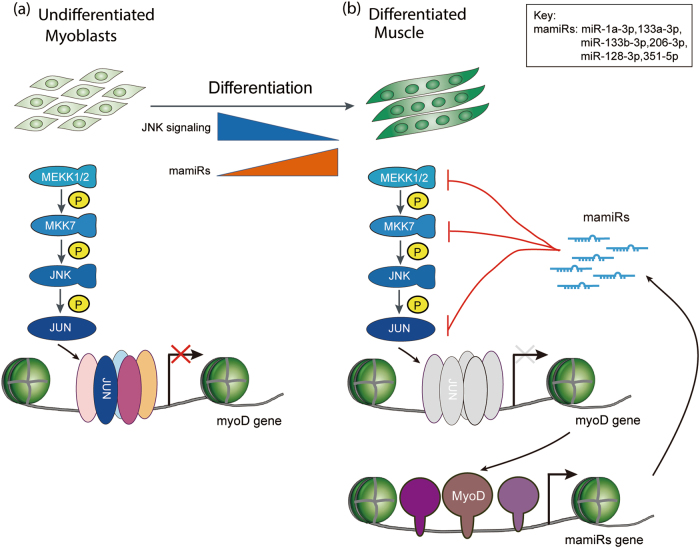Fig. 8.
A model of mamiRs and JNK/MAPK signaling forming a double-negative feedback regulatory network in skeletal muscle development. a In undifferentiated myoblasts, when JNK/MAPK signaling is activated, it phosphorylates its downstream effector c-Jun. P-c-Jun enters into the nucleus, and together with Fos or ATF family proteins forms a demeric compound that called AP-1 that can could inhibit MyoD transcription, therefore, blocking differentiation. b In differentiated muscle, the activity of JNK/MAPK signaling is attenuated because its key factors are targeted by mamiRs (miR-1a-3p, 133a-3p, 133b-3p, 206-3p, 128-3p, and 351-5p), c-Jun is rarely phosphorylated, so forms less AP-1 compound in nucleus and turns on MyoD transcription, activating the transcription of mamiR genes. In turn, mature mamiRs further repress the JNK/MAPK signaling, forming a double-negative feedback regulatory network in skeletal muscle development

